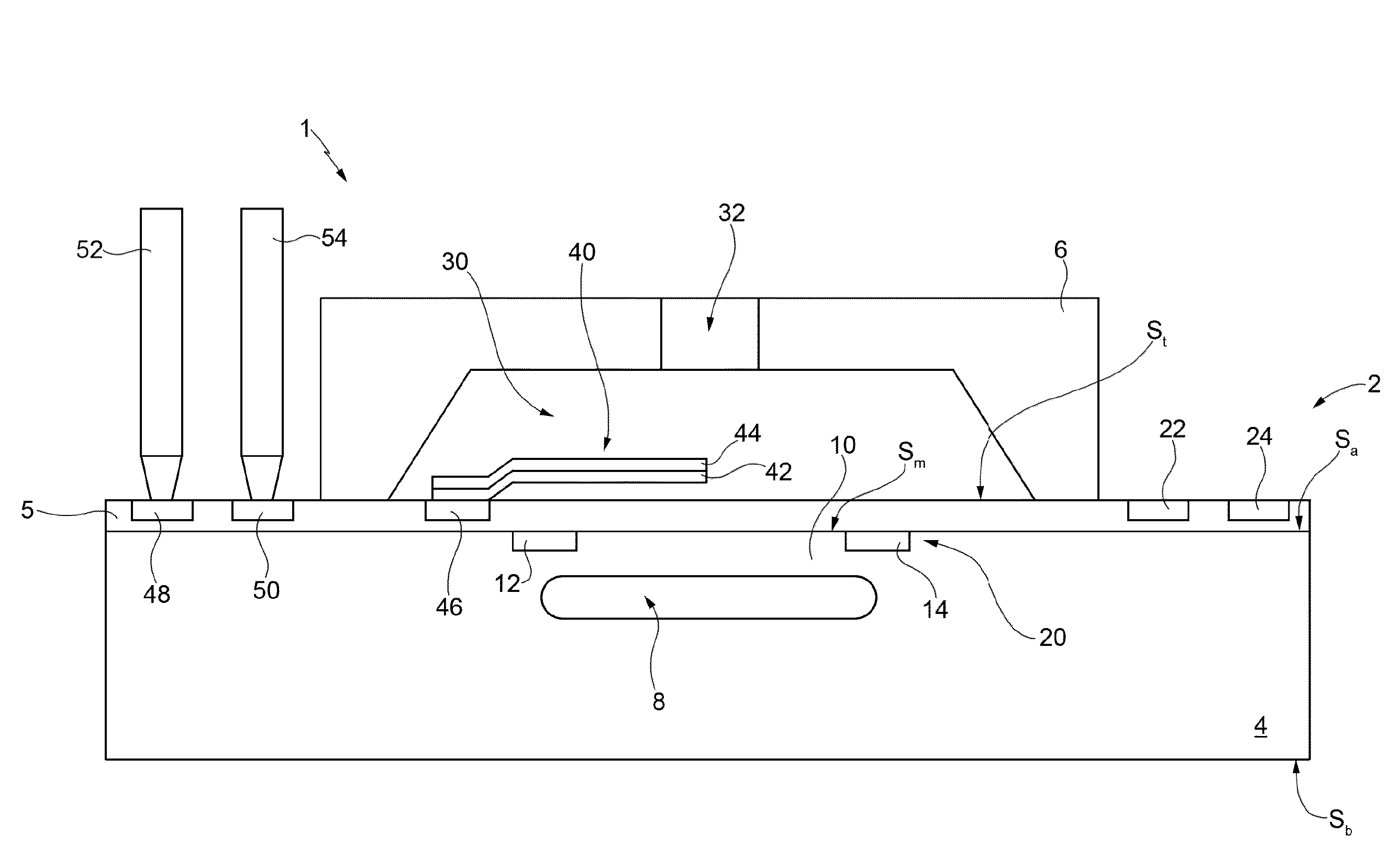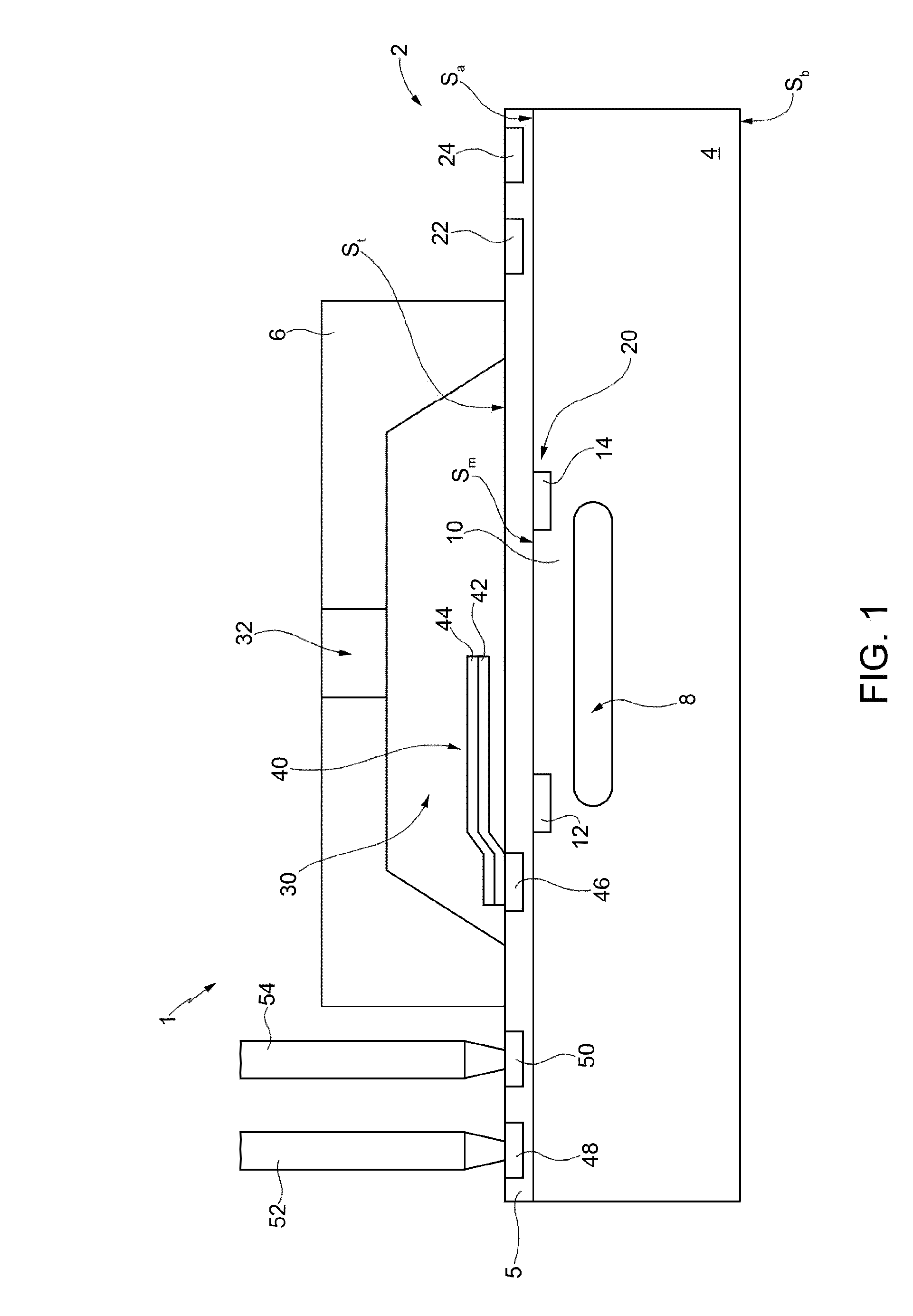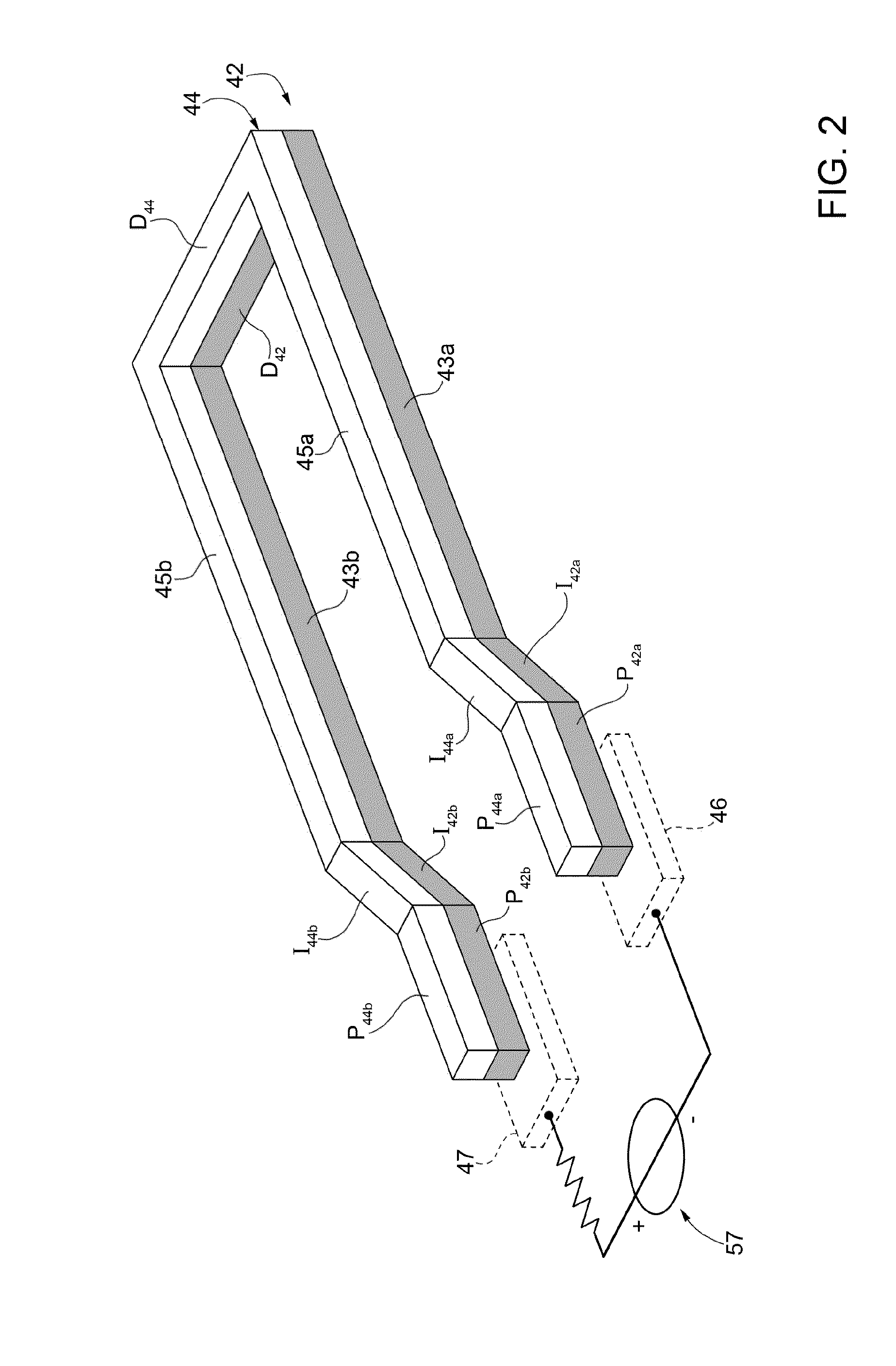Microelectromechanical sensing structure for a pressure sensor including a deformable test structure
a micro-electromechanical and sensor technology, applied in the direction of fluid pressure measurement, fluid pressure measurement by electric/magnetic elements, instruments, etc., can solve the problems of reduced parallelization capacity and high cos
- Summary
- Abstract
- Description
- Claims
- Application Information
AI Technical Summary
Benefits of technology
Problems solved by technology
Method used
Image
Examples
Embodiment Construction
[0023]FIG. 1 shows a pressure sensor 1, which comprises a sensing structure 2, which includes a semiconductor body 4, a top region 5, and a cap 6.
[0024]The semiconductor body 4 comprises a substrate (not shown) and may further comprise one or more epitaxial layers (not shown). In addition, the semiconductor body 4 delimits a cavity 8 of a buried type, referred to herein as “sensing cavity”8. In particular, without this implying any loss of generality, the semiconductor body 4 forms a membrane 10, which delimits the sensing cavity 8 at the top and is designed to undergo deformation as a function of the pressure exerted on the membrane itself.
[0025]The semiconductor body 4 is delimited at the top and at the bottom by a top surface Sa and a bottom surface Sb, respectively, referred to hereinafter as “top body surface” Sa and “bottom body surface” Sb. Furthermore, the top body surface 5, forms the surface that delimits the membrane 10 at the top, i.e., the surface of the membrane opposi...
PUM
| Property | Measurement | Unit |
|---|---|---|
| Temperature | aaaaa | aaaaa |
| Pressure | aaaaa | aaaaa |
| Electrical conductivity | aaaaa | aaaaa |
Abstract
Description
Claims
Application Information
 Login to View More
Login to View More - R&D
- Intellectual Property
- Life Sciences
- Materials
- Tech Scout
- Unparalleled Data Quality
- Higher Quality Content
- 60% Fewer Hallucinations
Browse by: Latest US Patents, China's latest patents, Technical Efficacy Thesaurus, Application Domain, Technology Topic, Popular Technical Reports.
© 2025 PatSnap. All rights reserved.Legal|Privacy policy|Modern Slavery Act Transparency Statement|Sitemap|About US| Contact US: help@patsnap.com



